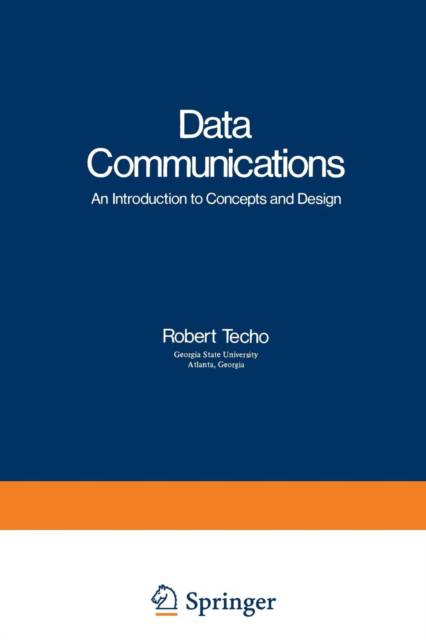
Bedankt voor het vertrouwen het afgelopen jaar! Om jou te bedanken bieden we GRATIS verzending (in België) aan op alles gedurende de hele maand januari.
- Afhalen na 1 uur in een winkel met voorraad
- In januari gratis thuislevering in België
- Ruim aanbod met 7 miljoen producten
Bedankt voor het vertrouwen het afgelopen jaar! Om jou te bedanken bieden we GRATIS verzending (in België) aan op alles gedurende de hele maand januari.
- Afhalen na 1 uur in een winkel met voorraad
- In januari gratis thuislevering in België
- Ruim aanbod met 7 miljoen producten
Zoeken
Omschrijving
This book has evolved primarily from lecture notes for data communications courses taught at Georgia State University since 1969. Additional material was derived from seminar presentations that were made during this period as well as from consulting work. Teaching data communications in the College of Business Administration influenced the point of view of this material, giving it a semitechnical orientation. This point of view has been extended to the prepara- tion of this book. Only those technical details were included which, it was felt, would lead the student to a better understanding of the subject. References are provided for those who desire further information in particular areas. The reader for whom this book is intended is the nontechnical person who has some knowledge of computer technology and who wishes to extend that knowledge to the field of data communications. The two key points stressed in this book are terminology and concepts. The objectives of this book are to enable the student: 1. To read articles in the field of data communications with an understand- ing of their content. 2. To be able to engage in knowledgeable discussions with communica- tions engineers on the subject of data communications. 3. To design and implement the hardware aspects of applications using data communications. The software that would be involved is beyond the scope of this book except where protocols are considered. v vi Preface 4. To effectively evaluate proposals for the implementation of data com- munications systems.
Specificaties
Betrokkenen
- Auteur(s):
- Uitgeverij:
Inhoud
- Aantal bladzijden:
- 293
- Taal:
- Engels
- Reeks:
Eigenschappen
- Productcode (EAN):
- 9781461591603
- Verschijningsdatum:
- 24/12/2012
- Uitvoering:
- Paperback
- Formaat:
- Trade paperback (VS)
- Afmetingen:
- 152 mm x 229 mm
- Gewicht:
- 408 g

Alleen bij Standaard Boekhandel
+ 213 punten op je klantenkaart van Standaard Boekhandel
Beoordelingen
We publiceren alleen reviews die voldoen aan de voorwaarden voor reviews. Bekijk onze voorwaarden voor reviews.









